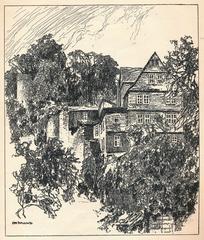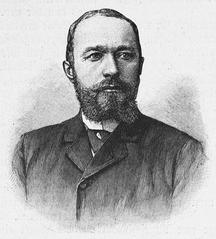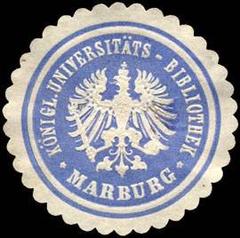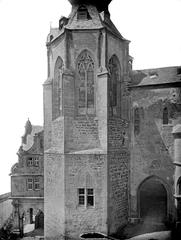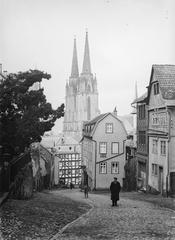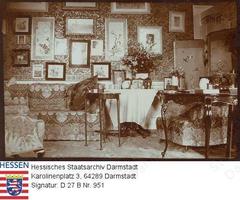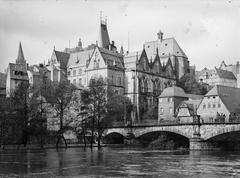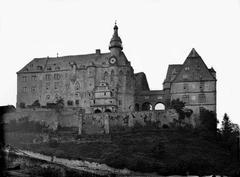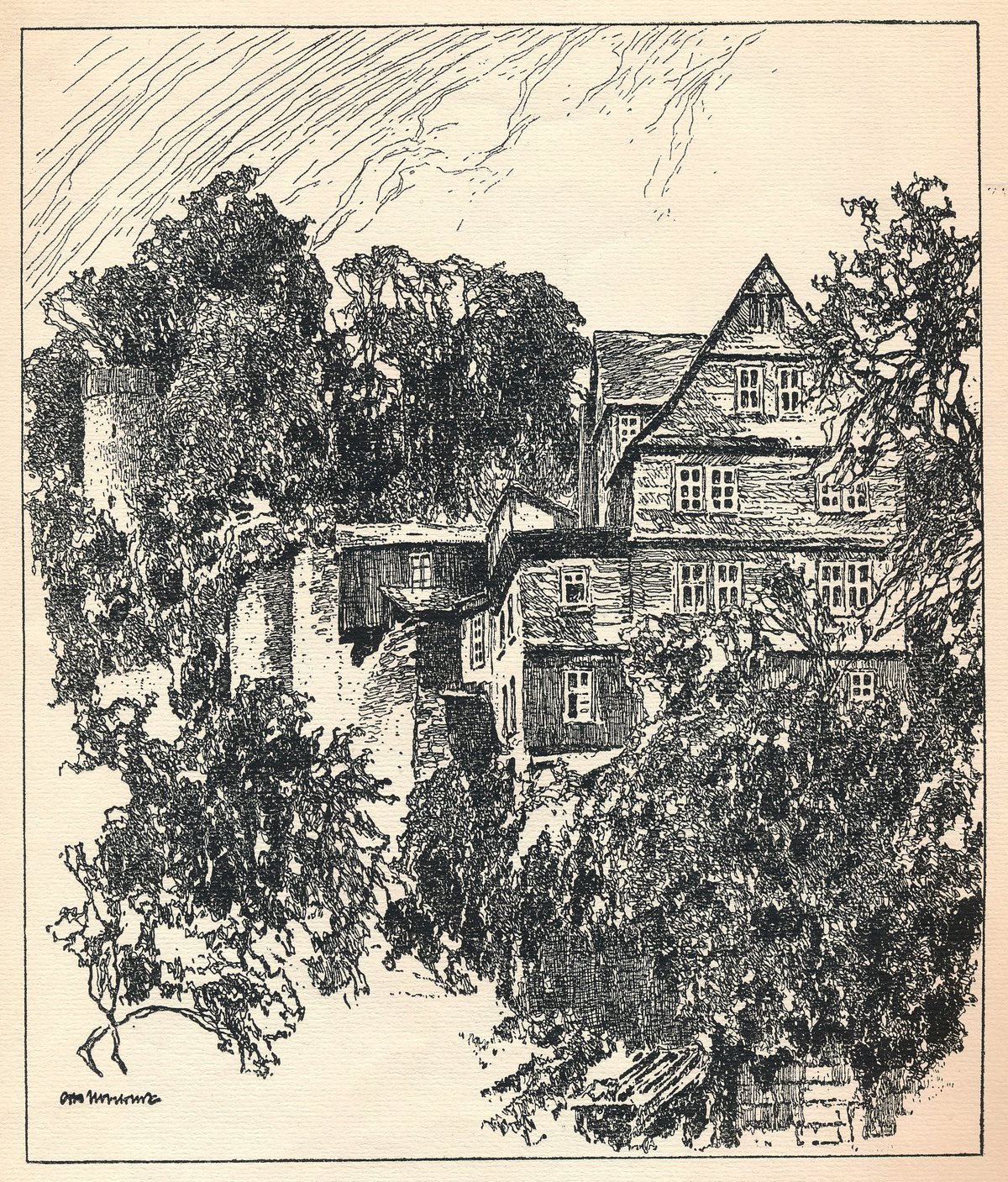
Bettinaturm Visiting Hours, Tickets, and Marburg Historical Sites Guide
Date: 03/07/2025
Introduction
The Bettinaturm stands as a testament to Marburg’s layered history, blending medieval fortifications, 19th-century architectural elegance, and a deep connection to German Romanticism. Whether you’re a history buff, a literary enthusiast, or a curious traveler searching for panoramic views and unique landmarks, the Bettinaturm is a compelling destination. This guide provides a thorough overview of the tower’s origins, architectural features, visiting hours, ticketing, accessibility, and integration into Marburg’s broader cultural landscape. It also highlights nearby attractions and offers practical advice to help you make the most of your visit (Marburg Tourismus, Triplyzer, TravelWhoop).
Table of Contents
- Introduction
- Historical Background
- Architectural Features and Preservation
- Visitor Information: Opening Hours, Tickets, and Accessibility
- How to Get There
- Nearby Attractions
- Visitor Tips
- Frequently Asked Questions (FAQ)
- Conclusion and Call to Action
- References and Further Reading
Historical Background
Origins and Early History
Dating back to the 13th century, the Bettinaturm was originally constructed as part of Marburg’s medieval city fortifications, protecting the town along the western approach of the Lahn River (homeoftravel.de, nomads-travel-guide.com). Its robust, round-stone construction and strategic location on Schlossberg (Castle Hill) reflect its defensive purpose.
The Romantic Era and Literary Significance
During the late 18th and early 19th centuries, the Bettinaturm gained cultural prominence through its association with Bettina von Arnim, a leading figure of German Romanticism. Residing nearby, Bettina cherished the tower, which became a gathering place for the Marburg Romantic Circle—an intellectual group including the Brothers Grimm and Clemens Brentano. Von Arnim’s literary work Die Günderode is set in and around the tower, cementing its place in German literary history (kulturreise-ideen.de).
Architectural Features and Preservation
The Bettinaturm is notable for its Romanesque round stone structure, thick defensive walls, and narrow windows typical of medieval military architecture. Its atmospheric setting—surrounded by tall trees and historic gardens—evokes both its martial past and its Romantic literary associations (homeoftravel.de). Over the centuries, the adjacent Forsthof has been repurposed, most recently as a student residence, maintaining the area’s academic and cultural vibrancy.
Visitor Information: Opening Hours, Tickets, and Accessibility
- Visiting Hours: The Bettinaturm is located on private property and does not maintain regular public visiting hours. Access is occasionally possible during guided tours or special events organized by the local tourism office or historical societies (komoot.com).
- Tickets: No general admission tickets are required as the tower is not regularly open to the public. Guided tours may be subject to fees.
- Guided Tours: These offer rare opportunities to explore the tower’s interior and learn about Marburg’s fortifications. Contact Marburg Tourism for schedules and booking.
- Accessibility: The approach to the tower involves steep, narrow paths and stairs, making it unsuitable for wheelchair users and challenging for visitors with limited mobility. The surrounding gardens and nearby historical sites are more accessible.
How to Get There
The Bettinaturm is located at Sybelstraße 16, 35037 Marburg, on Schlossberg between the Konrad-Biesalski-Haus and the historic Forsthof (onlinestreet.de).
By Train: Regular trains from Frankfurt (RE30, RB41, HLBRE98) reach Marburg in about an hour (travelwhoop.com).
By Bus: Bus 10 from Marburg Hauptbahnhof (main station) leads toward Oberstadt; be prepared for a steep uphill walk.
On Foot: Exploring Marburg’s Oberstadt on foot is highly recommended for its medieval ambiance and scenic views (marburg-tourismus.de).
Nearby Attractions
- Landgrafenschloss (Landgrave’s Castle): Marburg’s hilltop castle with panoramic views and museum exhibits.
- Elisabethkirche (St. Elizabeth’s Church): A renowned early Gothic church.
- Haus der Romantik: A museum celebrating the Romantic movement’s Marburg connections (kulturreise-ideen.de).
- Botanical Garden: Germany’s oldest, featuring over 4,500 plant species.
- Market Square and Town Hall: The lively heart of Marburg, surrounded by half-timbered houses.
- Kugelkirche and Universitätskirche: Notable for their religious and academic history.
Visitor Tips
- Footwear: Wear sturdy shoes for cobblestone streets and steep climbs.
- Weather: Dress in layers; Marburg’s climate is changeable, especially on Schlossberg.
- Accessibility: Use the city’s public elevators (Oberstadtaufzüge) for part of the ascent, but expect stairs and narrow alleys.
- Facilities: Public restrooms and a variety of cafés and restaurants are available in Oberstadt. Try local specialties like turkey schnitzel or Marburger Pyramid Lebkuchen.
- Photography: The area offers excellent photo opportunities of the city walls, rooftops, and Lahn valley, but be respectful of private property.
Frequently Asked Questions (FAQ)
Q: What are the Bettinaturm visiting hours?
A: The tower is not open to the general public except during special tours or events.
Q: Are tickets required to visit Bettinaturm?
A: No tickets are needed for general access; tours may have a fee.
Q: Are guided tours available?
A: Yes, through the Marburg tourism office or local historical societies.
Q: How do I get to Bettinaturm from Marburg main station?
A: Take Bus 10 towards Oberstadt or walk; the route is steep but scenic.
Q: Is the Bettinaturm wheelchair accessible?
A: No, due to stairs and narrow, steep paths.
Q: Are there restrooms or food vendors at Bettinaturm?
A: No; use facilities in Oberstadt or nearby attractions.
Conclusion and Call to Action
The Bettinaturm is a captivating highlight within Marburg’s rich historical landscape, offering visitors a unique perspective on both the city’s medieval defenses and its Romantic literary heritage. Although regular access to the tower is limited, its striking presence, surrounding gardens, and proximity to other major attractions make it an essential stop for any Marburg itinerary. To maximize your experience, consider joining a guided historical walk, and integrate your visit with other sites such as Landgrafenschloss, Elisabethkirche, or the Botanical Garden.
For the latest updates on tours and events, visit the Marburg Tourism Office, follow local social media channels, or download the Audiala app for curated audio guides and walking tours. Share your Bettinaturm photos and experiences using #BettinaturmMarburg to connect with fellow travelers.
References and Further Reading
- Exploring the Bettinaturm in Marburg: History, Visiting Hours, Tickets, and Nearby Attractions (homeoftravel.de)
- Exploring the Bettinaturm in Marburg: History, Visiting Hours, Tickets, and Nearby Attractions (nomads-travel-guide.com)
- Exploring the Bettinaturm in Marburg: History, Visiting Hours, Tickets, and Nearby Attractions (kulturreise-ideen.de)
- Visiting the Bettinaturm in Marburg: History, Architecture, and Practical Information (Triplyzer)
- Bettinaturm Visiting Hours, Tickets & Guide to Marburg Historical Sites (TravelWhoop)
- Bettinaturm Visiting Hours, Tickets & Guide to Marburg Historical Sites (Marburg Tourismus)
- Bettinaturm Visiting Hours, Tickets & Guide to Marburg Historical Sites (Komoot)
- Bettinaturm Visiting Hours, Tickets & Marburg Historical Sites Guide (Trip101)
- Bettinaturm Visiting Hours, Tickets & Marburg Historical Sites Guide (University of Marburg)
